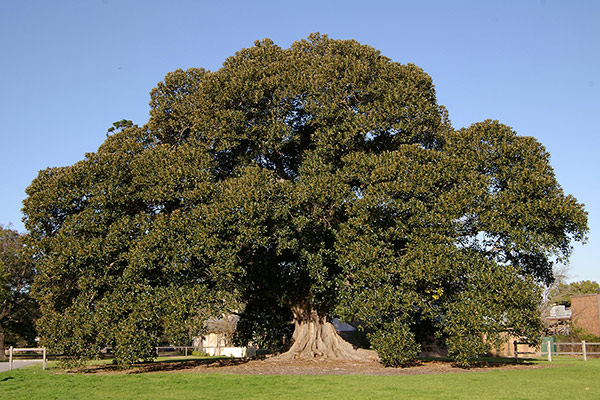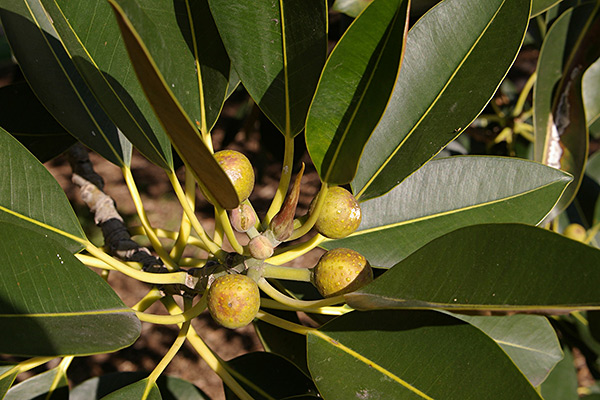General Description:
The genus Ficus consists of about 800 species distributed throughout India, parts of Asia, the Pacific islands and Australia. There are about 40 Australian species most of which are found in tropical areas.
Ficus macrophylla is a medium to large, spreading tree 15 to 35 metres high with a similar spread. It often has a butressed trunk. In nature it is a strangler fig – the seed germinates in the canopy of a host tree where the plant grows as an epiphyte while sending down roots to ground level, eventually enlarging and enveloping the host tree and becoming free standing. The large leaves are oval-shaped to elliptical 100-250 mm long, dark glossy green above and rusty beneath. The fruits are 20-25 mm in diameter, yellowish and turning purple when ripe. They occur on stalks from 10-20 mm long.
Two forms are recognised: F.macrophylla f. macrophylla (which is found on the mainland) and F.macrophylla f columnaris (from Lord Howe Island). The latter is so named due to the column-like trunks which develop from the roots – it is reported that specimens of this form can cover extensive areas of 1 hectare or more.
Moreton Bay fig makes an excellent, bushy plant for a large container but it should not be planted in the ground in a normal suburban environment. In the ground it develops into a tree with a vigorous root system – it is far too large for a suburban garden and can damage pavements and house foundations. It is an excellent shade tree for parks and larger properties and is widely used as a feature tree in parks and gardens around the world. It is adaptable to a range of soils and appreciates adequate moisture.
Propagation is usually from seed which germinates well without any pretreatment. Cuttings may also strike successfully.

Ficus macrophylla
Photos: Brian Walters

Ficus macrophylla
Photos: Brian Walters
 Australian Native Plants Society (Australia)
Australian Native Plants Society (Australia)